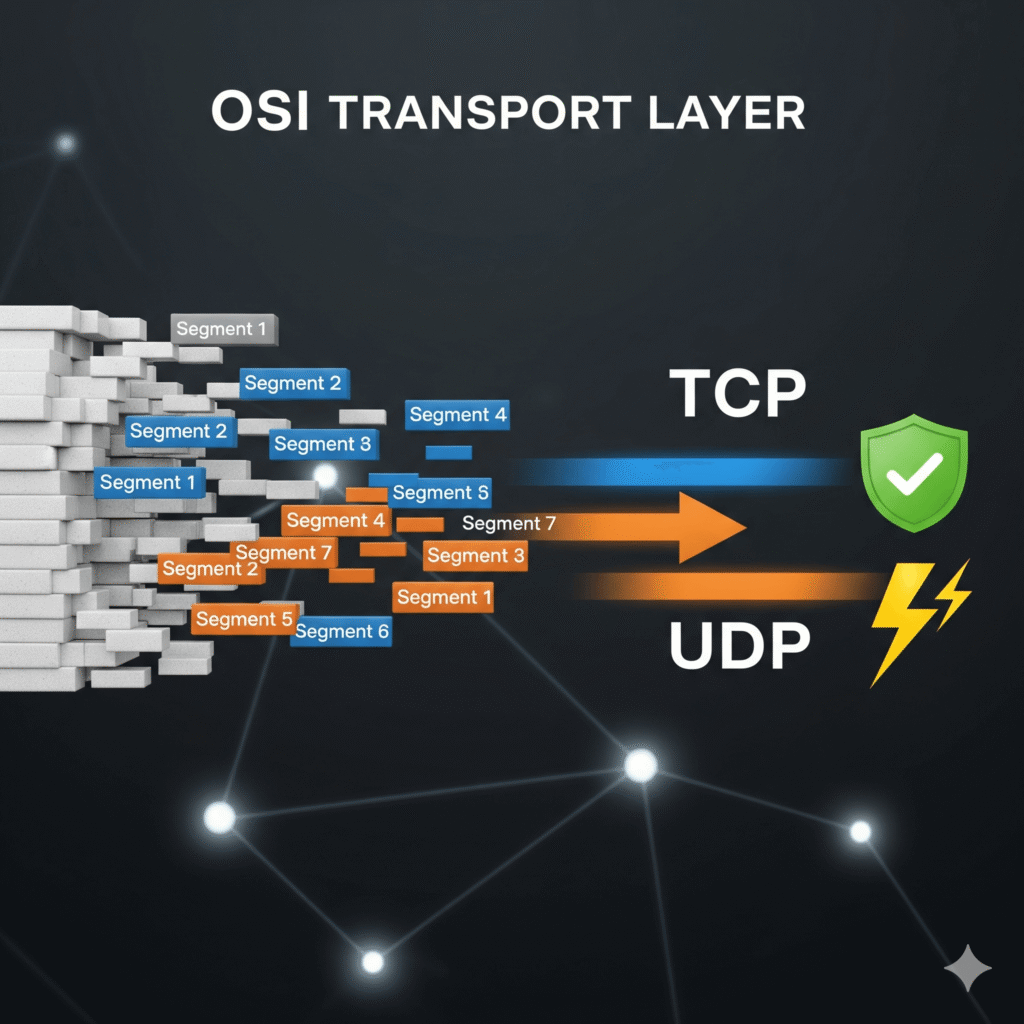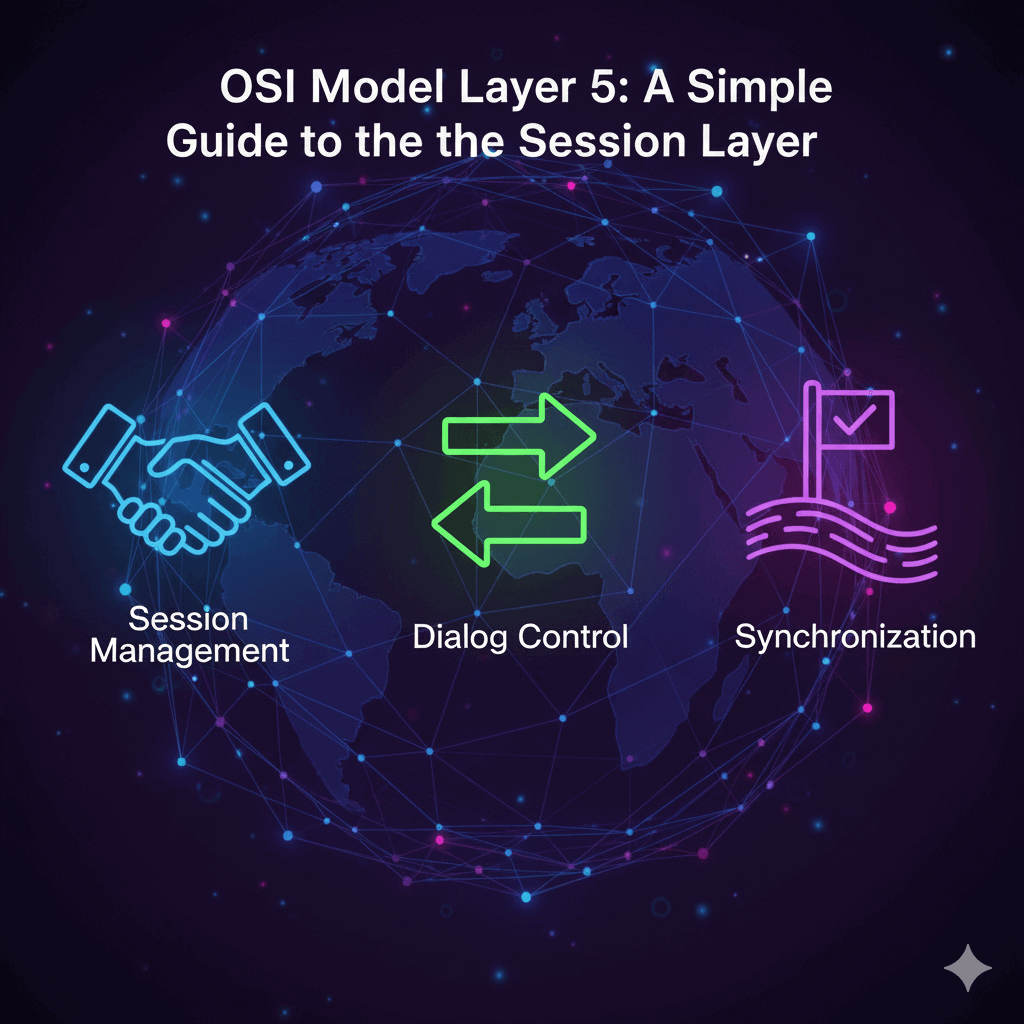OSI Model Layer 3: The Network Layer (IP Addressing & Routing)

In our last post, we saw how the Transport Layer (Layer 4) prepares our data for its end-to-end journey. But how does that data find its way through the vast, interconnected maze of networks that make up the internet? That’s the mission of Layer 3: The Network Layer. Think of this layer as the global […]
The Transport Layer Explained: How Data Moves Reliably Online

In our last post, we saw how the Session Layer (Layer 5) establishes and manages the conversation between two applications. But once that conversation is open, how do we actually send the data back and forth reliably? That’s the crucial job of Layer 4: The Transport Layer. Think of the Transport Layer as the network’s […]
OSI Model Layer 5: A Simple Guide to the Session Layer

In our last post, we explored how the Presentation Layer (Layer 6) acts as a universal translator, formatting our data securely. Now that our data is ready, it’s time to establish a connection and manage the conversation. Welcome to the engine room of network dialogue: Layer 5, the Session Layer. If the Application Layer is […]
